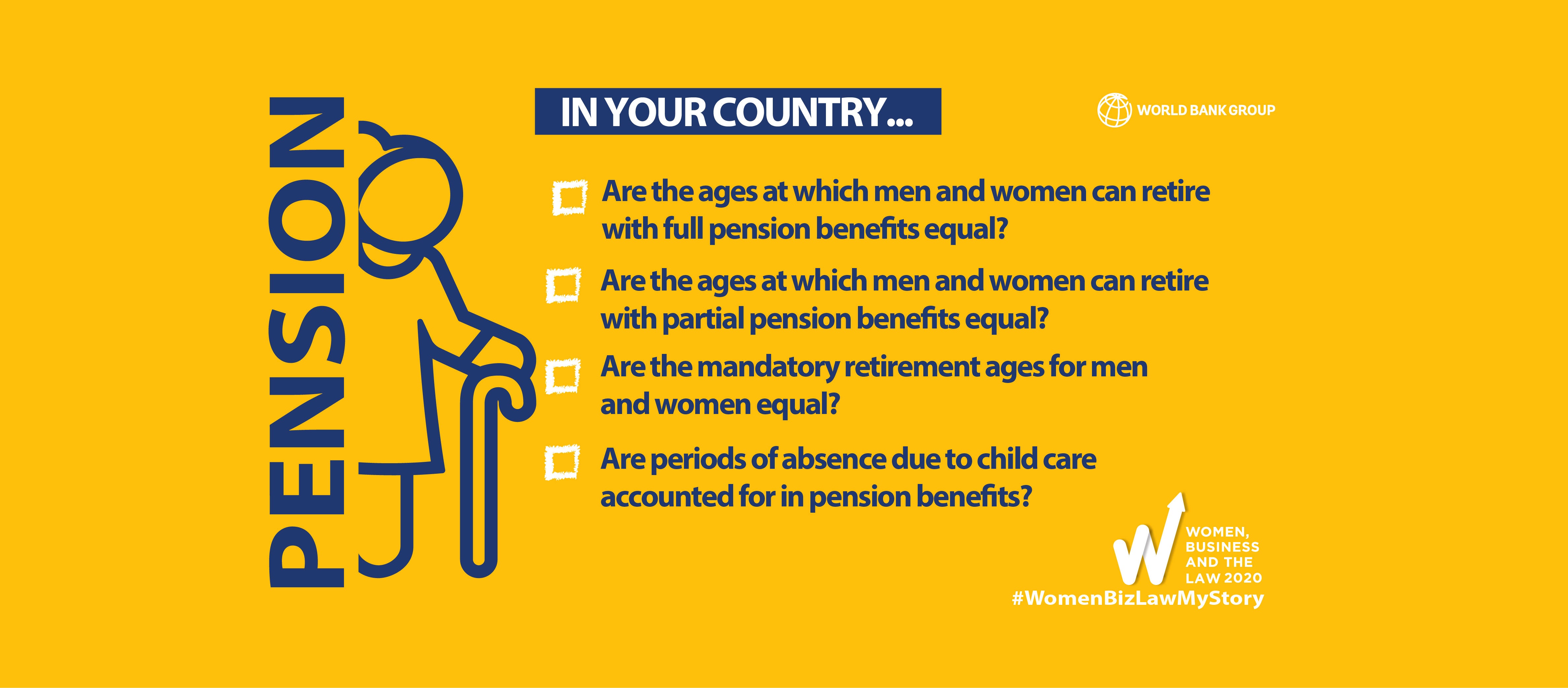 Pension indicator
Pension indicator
We have almost reached the end of our blog series about Women, Business and the Law 2020, the latest in a series of studies that measure gender inequality in the law. At this point, you may have learned some interesting facts: for example, how additional procedures when applying for a passport can restrict women’s mobility; how equal pay is not a reality in 70% of economies worldwide; or how laws in a quarter of economies do not protect women from sexual harassment at work. And it doesn’t end there. Women all over the world are not entitled to adequate maternity leave, cannot sign legally binding contracts, and have limited property rights.
You know by now that depending on where they live, women may face multiple obstacles that limit their opportunities and prevent them from thriving at work in the same way as men. But regardless of where they are from, working women have one thing in common: eventually, they will reach an age at which they have to retire. Will the inequality end when they reach old age?
According to Women, Business and the Law 2020, in over one-third of the 190 economies covered, laws establish earlier retirement ages for women to access their full pension benefits. The gap between women and men ranges from two years, like in Turkey, to 10 years, as in China. In 14 economies, employers can lawfully terminate a female worker’s contract sooner than a male’s.
Early retirement might sound nice, but for women it means shorter working lives, reduced contribution records, and fewer opportunities than men to build savings that will ensure comfort in their old age. Research shows that on average, women outlive men by six to eight years. Thus, equalizing retirement ages for women can increase female labor supply and guarantee that women have enough savings for when they retire and leave the labor force. In addition, taking periods of childcare into account for pension calculations guarantees that women’s pension benefits are not penalized or reduced. However, in 85 economies, the periods at which women take off to care for their children—such as maternity leave—are not accounted for in the calculation of their pension benefits.
The good news is that economies have started taking action to tackle this issue. In the past two years, for example, Argentina and Saudi Arabia equalized the mandatory retirement age for women and men. Timor-Leste and the Democratic Republic of Congo established pension credits for periods of childcare. In Nepal and Italy, women and men can now retire with full pension benefits at the same age. While we love seeing such improvements, there is still a lot to be done.
As women continue to work and thrive in their careers as employees and business owners, we must make sure that they can reach old age and still reap the benefits of their lifetime of dedication and hard work. One thing is for sure: reforms that close the legal gender gap need to pick up the pace. That way, women can be equal both during and after their working lives.




Join the Conversation